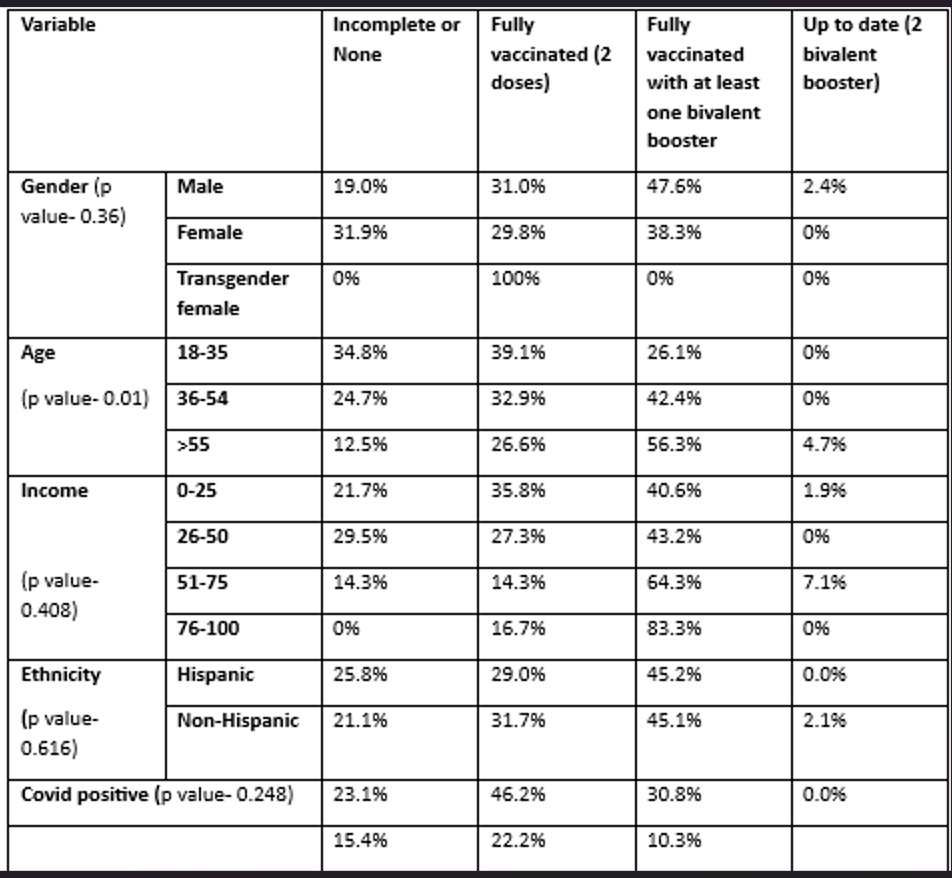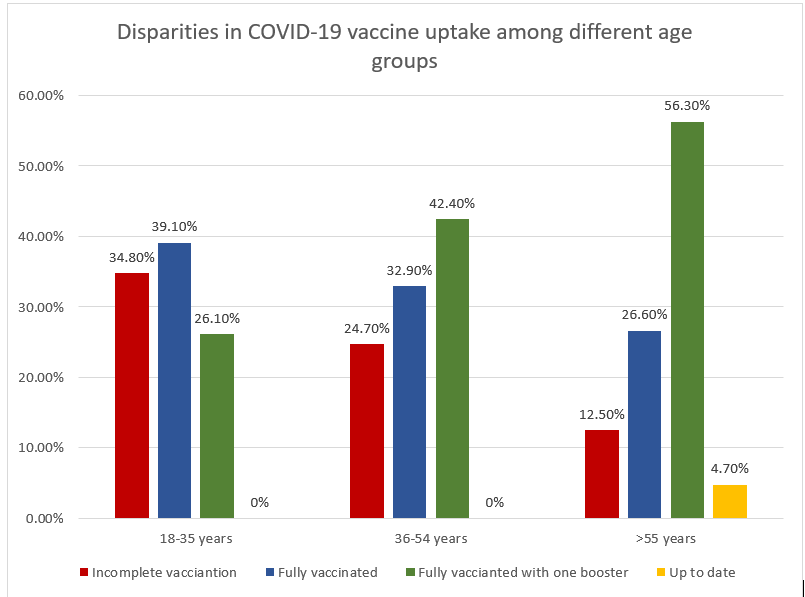Background: With the advent of COVID-19 vaccinations, disparities in vaccination rates across various demographic groups especially in vulnerable population such as HIV positive patients have become an area of concern. Understanding these disparities and their underlying factors can provide essential insights for designing targeted interventions and optimizing vaccine distribution strategies. This study sought to investigate the vaccination rates and acceptance of booster doses among different demographic cohorts at an infectious diseases clinic.
Methods: This retrospective observational study utilized vaccination data obtained from an infectious diseases clinic. The study population was categorized into four distinct cohorts based on their vaccination status: those with incomplete vaccination (one dose or less), individuals who were fully vaccinated (having received two doses), those who were fully vaccinated with at least one booster dose, and individuals who were considered up to date with two bivalent booster doses. Additionally, these cohorts were further stratified based on demographic variables such as gender, age, income, and ethnicity. Disparities within these demographic subgroups were analyzed using the SPSS statistical software, with chi-square tests employed to assess the significance of observed differences.
Results: In this study encompassing a total of 174 patients, the vaccination rates demonstrated certain disparities among different demographic groups. Notably, males exhibited slightly higher vaccination rates overall compared to females, with 47.6% of males having received at least one bivalent booster, in contrast to 38.3% of females, although this difference did not reach statistical significance. Among age groups, individuals aged above 55 years exhibited the highest rate of vaccination with booster doses, with 2.4% considered up to date with all recommended vaccines. Although individuals in the age group of 18-35 showed a higher rate of full vaccination (39.1%), but acceptance of booster doses in this group was relatively lower, at 26.1%. Individuals from higher income households displayed higher vaccination rates, particularly with booster doses, as 83.3% of this group had received such boosters. Both Hispanic and non-Hispanic patients showed similar vaccination rates with booster doses, at 45.2% and 45.1%, respectively. Among COVID-19 positive patients, 42.6% belonged to the fully vaccinated group. It is noteworthy that 22.2% of those who had received two doses tested positive for COVID-19, while only 10.3% of individuals who had received bivalent booster vaccines in addition to their initial two doses tested positive for the virus.
Conclusions: The study highlights disparities in vaccination rates across various demographic groups. Considering the patterns observed, there’s a pressing need for more comprehensive studies to delve deeper into these disparities. Quality improvement projects could serve as invaluable tools in understanding the underpinnings of such discrepancies and guiding actionable responses. To ensure that all sections of the population are adequately protected, targeted interventions are crucial. Addressing hesitancy among specific groups and ensuring equitable distribution, especially among vulnerable sections, will be pivotal in our ongoing fight against COVID-19.


